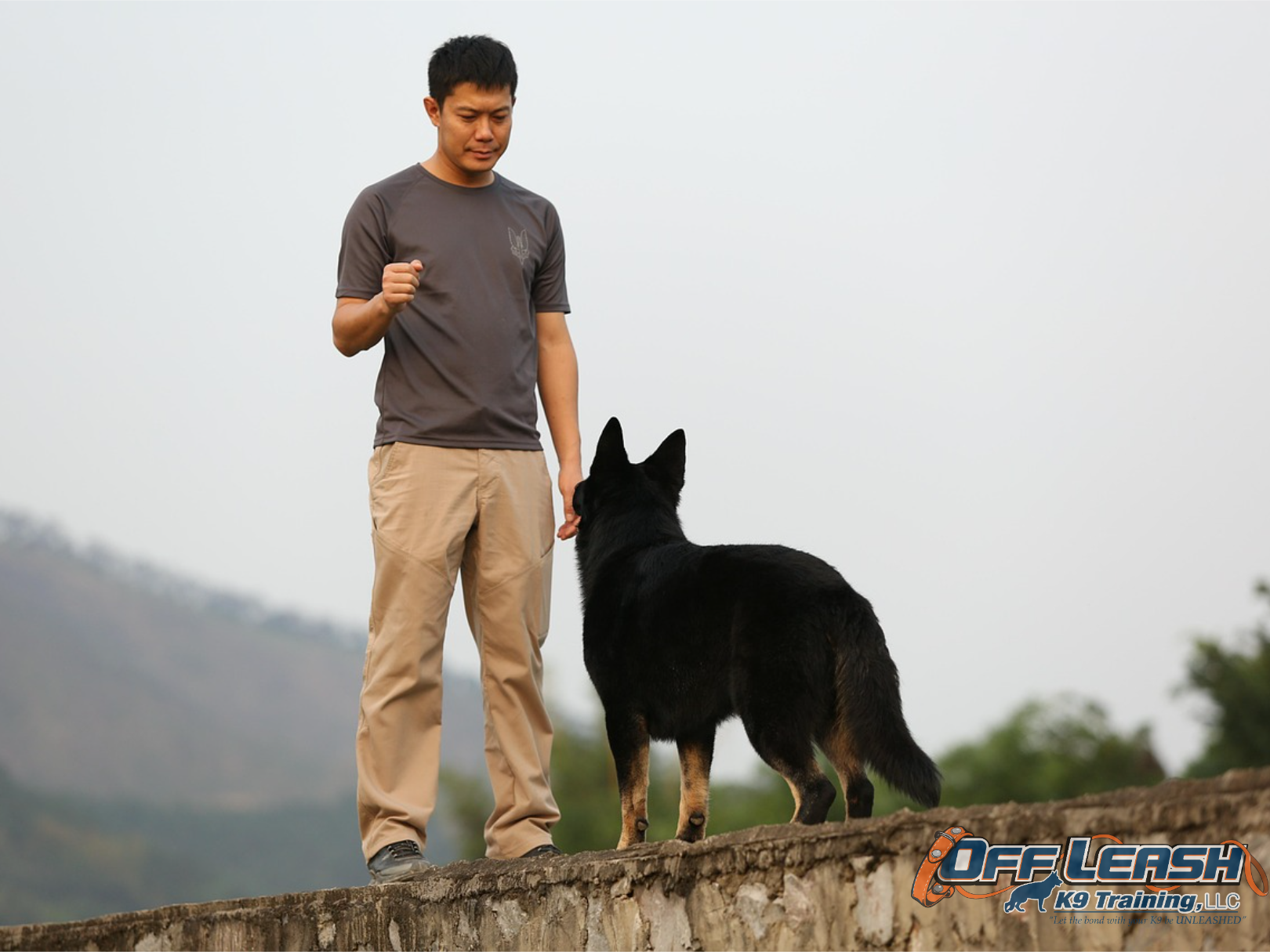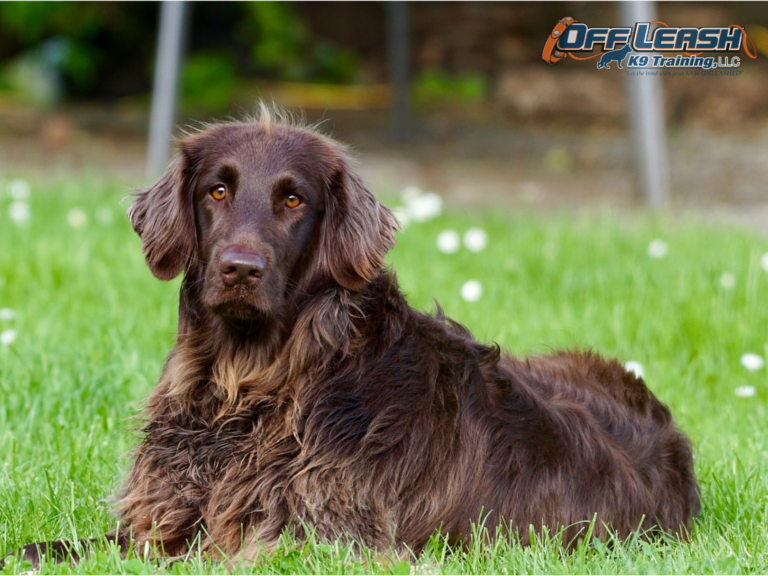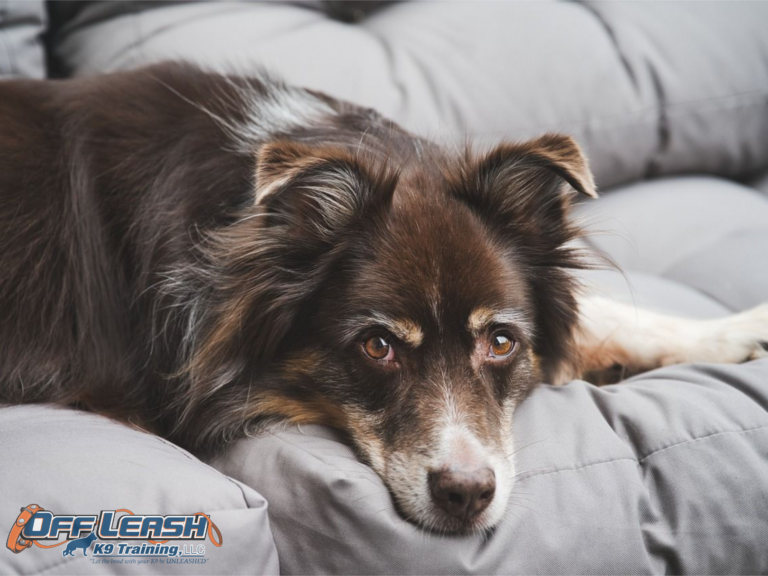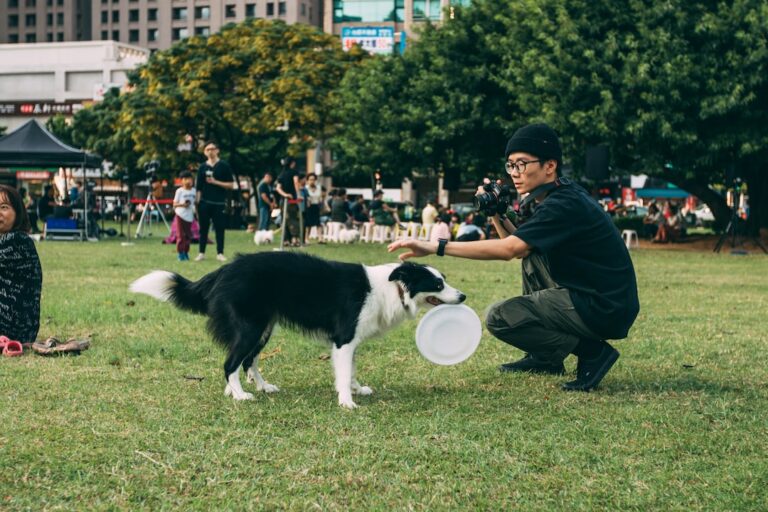Maintaining Dog Training: The Key to Long-term Obedience Success
The article explores the importance of maintaining dog training to ensure a well-behaved and obedient dog, emphasizing the need for regular training reinforcement, structured walks, socialization, and balanced training.
Introduction to the Importance of Maintaining Dog Training
Training your dog is a significant first step towards a harmonious relationship, but the real challenge often lies in maintaining those training achievements over time. A well-trained dog not only brings immense joy and companionship into our lives but also strengthens the bond between owner and pet, leading to a more enjoyable and fulfilling relationship. This bond is further cemented through the continuous practice and reinforcement of the training principles. Maintaining your dog’s training is crucial for ensuring that the positive behaviors and obedience learned don’t fade away but instead become a permanent part of your dog’s behavior.
However, without ongoing maintenance, it’s easy for dogs to revert to their old habits. This regression not only undoes the progress made but can also lead to frustration for both the pet and the owner. Continuous reinforcement of training commands and behaviors is essential to prevent this backsliding. By integrating training exercises into your daily routines, you can help your dog remember and adhere to their training, ensuring that their obedience and skills remain sharp. This commitment to maintenance not only preserves the hard-earned progress but also enhances the overall quality of life for you and your dog, ensuring a lasting and rewarding companionship.
The Essentials of Maintaining Training

Moreover, incorporating training cues into daily routines is a strategic approach to make obedience an integral part of your dog’s life. This method ensures that commands such as “sit,” “stay,” or “come” are not only followed in a training environment but are adhered to during various daily activities. Such consistent application of training principles helps in cementing the obedience commands your dog has learned, making them more responsive and well-behaved even outside of structured training scenarios. It’s a way of blending training into the fabric of everyday life, making obedience second nature to your dog. This approach not only reinforces good behavior but also strengthens the bond between you and your dog, as it involves ongoing interaction and mutual understanding. Maintaining your trained dogrequires consistent effort from the owner.
Daily, Weekly, and Monthly Maintenance Tasks for Dogs
To ensure the long-term success of your dog’s training, integrating structured daily, weekly, and monthly tasks into your routine is essential. Starting with daily activities, dedicating time for mental stimulation such as puzzle toys, or training games not only keeps your dog’s mind active but also reinforces the obedience skills learned during training. Incorporating a 30-minute focus walk can significantly improve your dog’s attentiveness and responsiveness to commands in everyday situations. This routine not only helps in retaining the discipline instilled during training but also strengthens the bond between you and your dog through positive reinforcement and shared activities.
Moving to weekly and monthly maintenance tasks, setting aside time each week to practice specific commands like recall, stay, or impulse control exercises ensures that your dog does not forget these critical behaviors. Weekly sessions focusing on door manners prevent door-dashing, a common issue among dogs of all ages. Monthly tasks should include more extensive challenges, such as visits to new environments or socialization opportunities. These can be as simple as a walk in a different neighborhood or a controlled meet-up with new dogs and people, helping your dog to stay adaptable and comfortable in various settings. Remember, the goal of these maintenance tasks is not just to prevent regression in training but also to encourage and nurture a well-rounded, sociable, and confident dog.
Importance of Structured Walks, Socialization, and Boundaries
Structured walks are more than just a way to exercise your dog; they’re a vital component of maintaining discipline and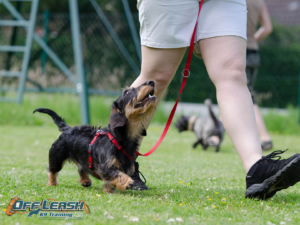
Socialization and setting boundaries are equally important in maintaining your dog’s training. Proper socialization exposes your dog to a variety of people, animals, and situations, reducing the likelihood of fear or aggression-based behaviors. By gradually introducing your dog to new experiences in a controlled manner, you help them develop confidence and good manners in social settings. Moreover, establishing clear boundaries for interactions with strangers and other animals is crucial. It teaches your dog what is expected of them, helping to avoid confusion and misbehavior.
Correcting Behavior and Equipment Use in Dog Training
Navigating the nuances of correcting behavior in dogs requires a keen understanding of the distinction between obedience commands and addressing undesirable behaviors. For obedience commands, it’s important to establish a level of correction that is firm yet fair, ensuring that the dog associates the command with the desired action without feeling threatened or scared. When it comes to behavioral issues, such as excessive barking or jumping, a different approach is often needed. Here, the focus shifts to understanding the root cause of the behavior and addressing it with patience and consistency, using methods that redirect the dog’s attention to more positive behaviors. This differentiation is crucial for maintaining a trust-based relationship between the owner and the dog, ensuring the training process is as effective and humane as possible.
The role of equipment in dog training cannot be overstated. Tools like e-collars, when used correctly, can significantly enhance the training experience, providing immediate feedback to the dog and allowing for consistency in commands, even from a distance. However, the key to successful equipment use lies in the hands of the dog owner or trainer. Understanding how and when to use these tools, and pairing them with positive reinforcement techniques like treats and praise, creates a balanced training regimen. This approach not only ensures effective behavior correction but also aids in skill retention, encouraging dogs to repeat desired behaviors eagerly. The correct use of equipment, combined with a consistent reinforcement strategy, lays the foundation for a well-behaved dog, fostering a deeper bond between pets and their owners. For those looking to refine their skills in this area, Off Leash K9 Training of Corpus Christi offers tailored guidance and support, empowering dog owners to achieve lasting training success. Visit https://corpuschristidogtrainers.com/ for more insights and training solutions.
Implementing Long-term Strategies for Dog Training Maintenance
Achieving long-term success in dog training requires more than just completing a training course; it necessitates commitment to ongoing maintenance and support. A key component of this is having a well-structured post-training plan in place. This plan should not only address the immediate aftermath of training completion but also anticipate potential challenges that may arise in the future. Owners need to be prepared to continue reinforcing the training their dogs have received, making adjustments as necessary to deal with new or recurring behavior issues. This is where the value of ongoing support and guidance from professional trainers becomes evident.
Moreover, continuous communication with a professional trainer is crucial for keeping up with the progress and ensuring that the benefits of the initial training are not lost over time. Trainers can help owners identify signs of regression or new behavioral issues early on and provide effective strategies to address them. This ongoing support can be particularly beneficial in preventing minor issues from developing into more significant problems, thereby preserving the strong bond between owner and dog.
Conclusion: Ensuring Long-term Success Through Consistent Training
Ensuring the long-term success of your dog’s training requires a commitment to consistent practice and reinforcement of learned behaviors. This dedication not only helps in sustaining the obedience and skills your dog has acquired but also deepens the bond between you and your furry companion. The journey doesn’t end with the completion of a training program; it’s a continuous process that involves daily, weekly, and monthly tasks tailored to keep your dog’s training fresh and relevant.
Incorporating structured training sessions into your routine, setting clear expectations, and utilizing positive reinforcement techniques are essential strategies for maintaining the progress achieved through training. Regularly revisiting training cues and incorporating them into everyday situations can significantly enhance your dog’s obedience and responsiveness. Off Leash K9 Training of Corpus Christi understands the importance of this continual engagement and provides a wealth of resources and support to help you and your dog thrive. By leveraging their expertise, you can navigate the path to maintaining your dog’s training achievements with confidence. Visit https://corpuschristidogtrainers.com/ to explore a wide array of training options that can help reinforce and build upon your dog’s training success, fostering a harmonious and fulfilling relationship for years to come.

